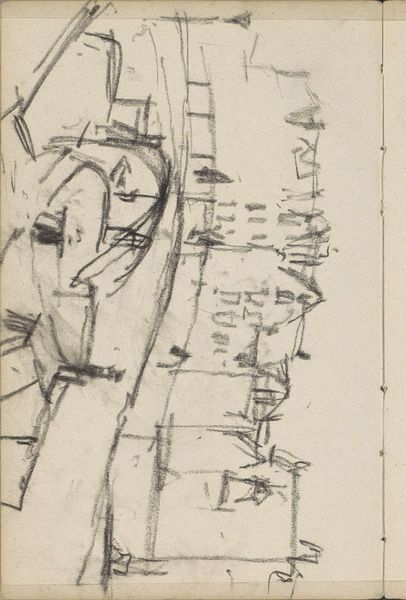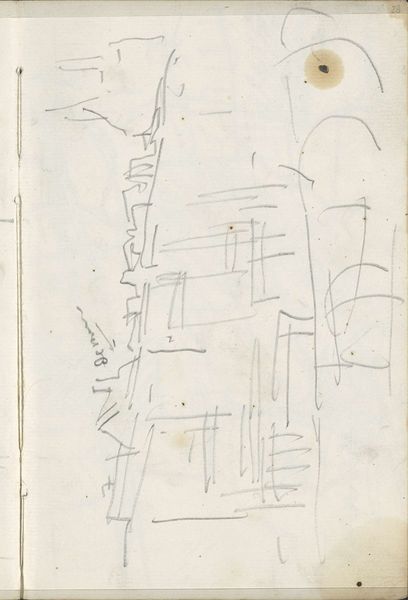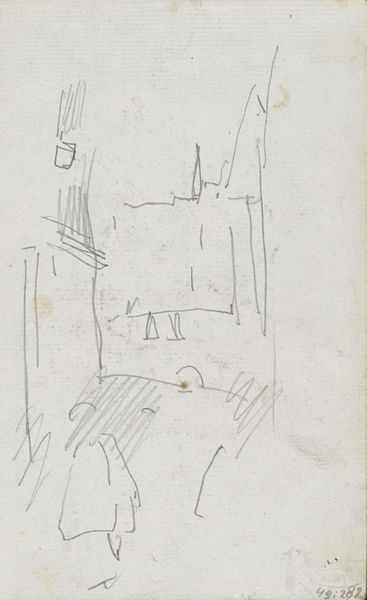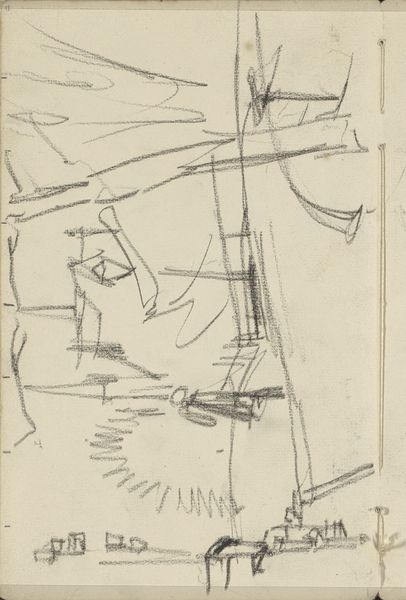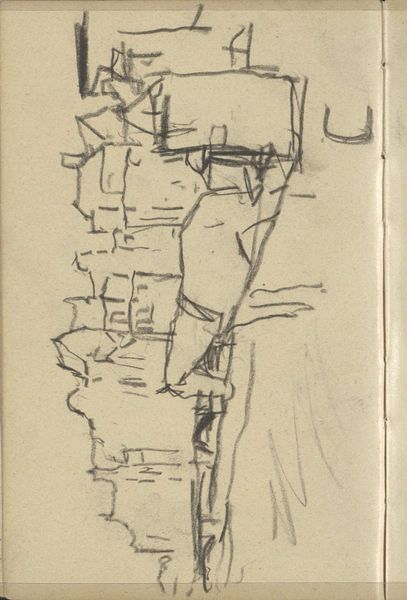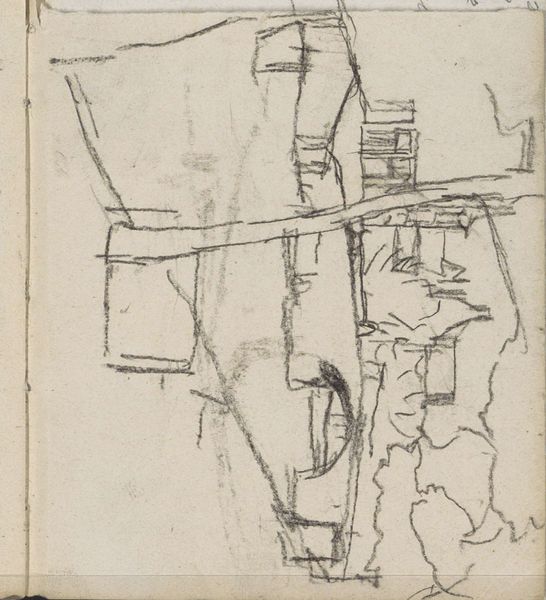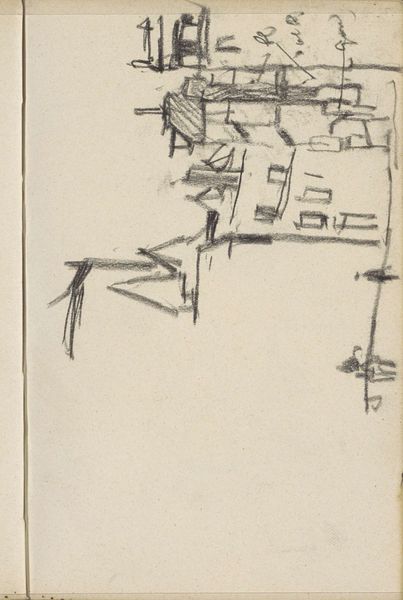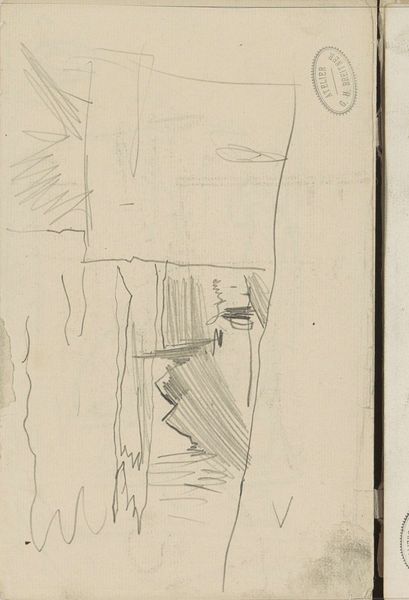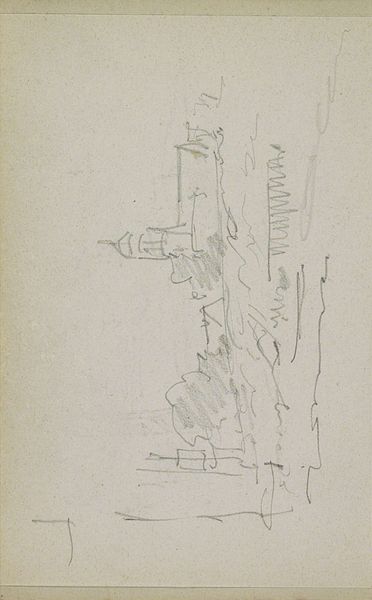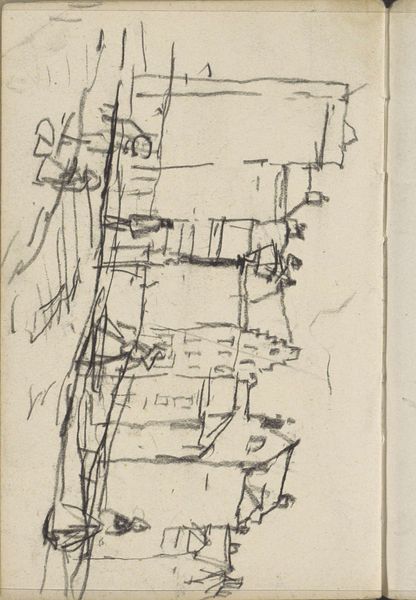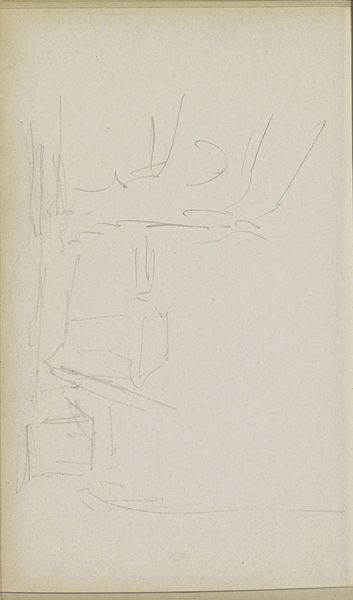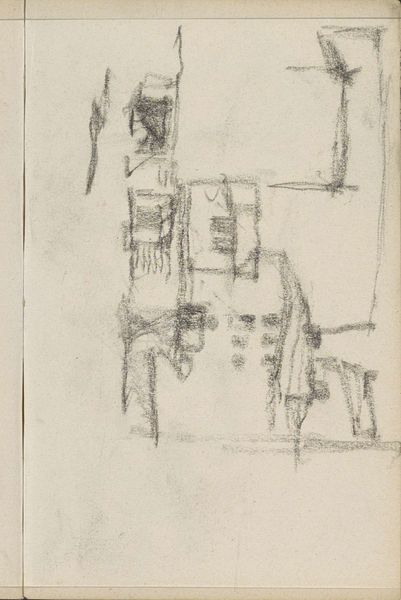
Copyright: Rijks Museum: Open Domain
Editor: Here we have George Hendrik Breitner's "Gezicht in Amsterdam," a graphite drawing from 1909, currently held at the Rijksmuseum. It looks so ephemeral. What can we learn from its rough sketch-like qualities? Curator: I see here a study, perhaps preliminary, concerned not with a finished product but the raw materials of representation. The graphite on paper isn’t simply depicting Amsterdam, it's an act of engagement, a grappling with the city's burgeoning industrial expansion that the artist is trying to pin down with the barest essentials of labor - line and form.. Do you notice how the very lightness of the lines lends an impermanence to the scene, reflecting perhaps the changing face of Amsterdam itself? Editor: I do see that. It feels like he's capturing a moment in time, not constructing a lasting monument. The buildings aren't solid; they're just suggested. What about the medium, the use of graphite? Is it meant to contrast traditional oil paintings? Curator: Precisely! Breitner uses drawing as a means to bypass the conventions of established art, embracing a medium associated with sketches, studies, the *work* of art. What does that tell you about what art was *becoming* at the time? Think of the industrialization occurring; everything about traditional hierarchies was up for grabs! Editor: So, in a way, the choice of material and style are challenging the established order and pointing towards something new. It’s like he's saying the process, the labor, is just as important as the final artwork. Curator: Exactly! The drawing itself is the commodity of labor. It is representative of something bigger than the lines that encompass it. The paper itself would be sourced with intensive manual labor, as was graphite and the production of the image as well. Editor: It makes you rethink the meaning of art and artistic expression during that period. Thank you. Curator: My pleasure, and remember to think about where it sits. Viewing is as important as creating when thinking of art as labour!
Comments
No comments
Be the first to comment and join the conversation on the ultimate creative platform.

